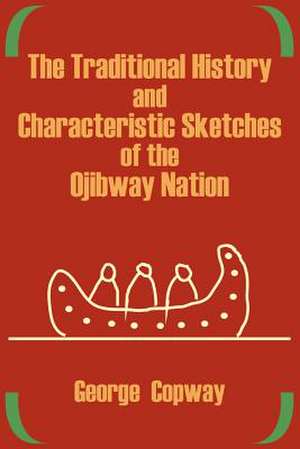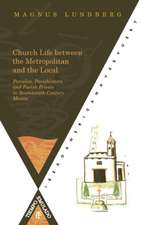The Traditional History and Characteristic Sketches of the Ojibway Nation
Autor George Copwayen Limba Engleză Paperback – 31 mai 2002
| Toate formatele și edițiile | Preț | Express |
|---|---|---|
| Paperback (2) | 50.91 lei 22-36 zile | |
| Mint Editions – 3 aug 2021 | 50.91 lei 22-36 zile | |
| University Press of the Pacific – 31 mai 2002 | 140.56 lei 43-57 zile | |
| Hardback (1) | 80.17 lei 22-36 zile | |
| Mint Editions – 15 feb 2022 | 80.17 lei 22-36 zile |
Preț: 140.56 lei
Nou
Puncte Express: 211
Preț estimativ în valută:
26.90€ • 27.98$ • 22.21£
26.90€ • 27.98$ • 22.21£
Carte tipărită la comandă
Livrare economică 14-28 aprilie
Preluare comenzi: 021 569.72.76
Specificații
ISBN-13: 9781410202413
ISBN-10: 1410202410
Pagini: 316
Ilustrații: 1
Dimensiuni: 151 x 233 x 21 mm
Greutate: 0.49 kg
Editura: University Press of the Pacific
Locul publicării:United States
ISBN-10: 1410202410
Pagini: 316
Ilustrații: 1
Dimensiuni: 151 x 233 x 21 mm
Greutate: 0.49 kg
Editura: University Press of the Pacific
Locul publicării:United States
Notă biografică
George Copway (1818-1869) was a Mississauga Ojibwa writer, missionary, and advocate. Born in Trenton, Ontario, his Ojibwa name was Kah-ge-ga-gah-Bowh, meaning He Who Stands Forever. His father John was a medicine man and Mississauga chief who converted to Methodism in 1827. Sent to a nearby mission school, Copway became a missionary in 1834, working in Wisconsin to translate the Book of Acts and the Gospel of St Luke into Ojibwa. After earning an appointment as a Methodist minister, Copway moved with his wife to Minnesota, where they would raise a son and daughter while serving as missionaries. In 1846, accusations of embezzlement for his work on the Ojibwe General Council forced him to leave the Methodist church. The next year, he published The Life, History and Travels of Kah-ge-ga-gah-Bowh, a bestselling memoir that was the first book published by a Canadian First Nations writer. Encouraged by this success, Copway launched a weekly New York City newspaper called Copway¿s American Indian but failed to keep his venture afloat despite letters of support from Lewis Henry Morgan, James Fenimore Cooper, and Washington Irving. Over the next decade, he succumbed to alcoholism and debt, and was left by his wife and daughter in 1858. Copway spent the last years of his life writing on Indian history, working as an herbalist, and recruiting troops for the Union army.






